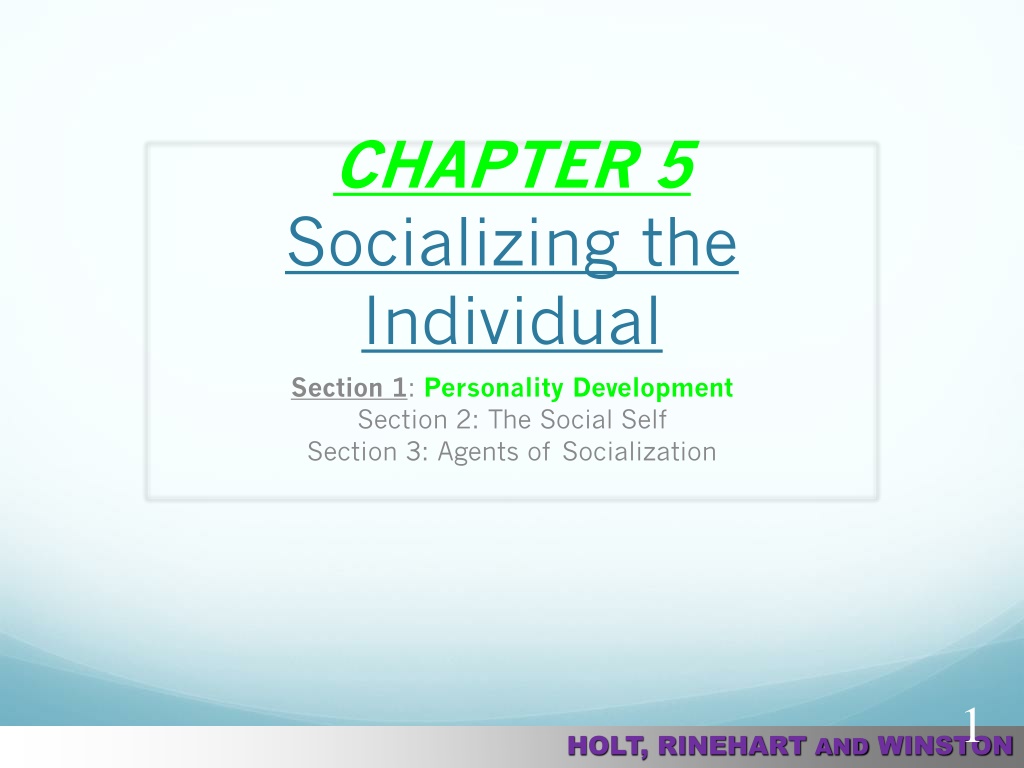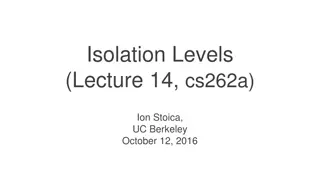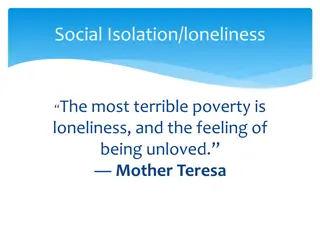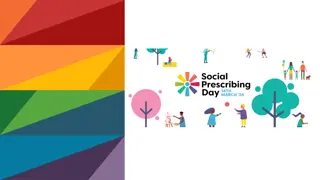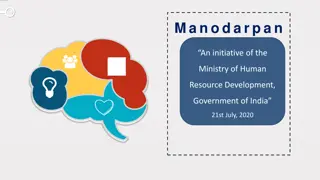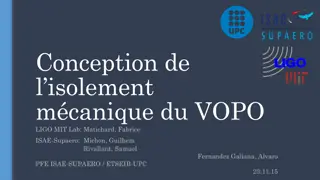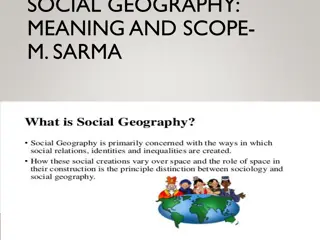The Impact of Social Isolation on Human Development
The findings from the study on Rhesus monkeys and case studies of isolated children like Anna, Isabelle, and Genie highlight the significant effects of social deprivation on human development. It shows that social interaction and nurturing environments are crucial for healthy psychological and emotional growth, emphasizing the importance of socialization in shaping an individual's personality and self-identity.
Download Presentation

Please find below an Image/Link to download the presentation.
The content on the website is provided AS IS for your information and personal use only. It may not be sold, licensed, or shared on other websites without obtaining consent from the author. Download presentation by click this link. If you encounter any issues during the download, it is possible that the publisher has removed the file from their server.
E N D
Presentation Transcript
CHAPTER 5 Socializing the Individual Section 1: Personality Development Section 2: The Social Self Section 3: Agents of Socialization 1 HOLT, RINEHART AND WINSTON
Harlow (1962)- Rhesus Monkeys Complete isolation for 1st 6 months seriously distributed development Infant monkeys given artificial mother of wire mesh also did poorly Infants given artificial mother covered in cloth did better, they would cling to mother
2 Important Discoveries As long as infant monkeys were surrounded by other infant monkeys, they were not adversely affected by a lack of mother Lesser amounts of isolation (up to 3 months) caused some problems but they were temporary. Longer periods of isolation had damage that could not be undone
Anna and Isabelle Anna: Confined to an attic at 6 months old. Result: (age 6) Could not walk, talk, feed herself, expressionless face. Later on: could eventually talk, feed herself, could talk in phrases died at 10 years old. 4
Isabelle: She and her deaf mother confined to a dark closet. Result: Used gestures to communicate Did not learn to speak Crawled on her hands and knees Made grunting, animal-like sounds Ate with hands Later On : Able to overcome her early social deprivation due to the constant contact with her mother. 5
Genie: Confined at age of 20 months to a small bedroom. Tied to an infant's potty-chair and nights wrapped in a sleeping bag. Totally silent world!! Toys: 2 plastic raincoats; empty cottage cheese container! 6
Result of Genie: Discovered at 13 years old. Could not stand straight!! Social/Psychological skills of one-year-old. At 21 years of age, still could not function as a social being. 7
Institutionalization: Children in orphanages and hospitals: Children wasted away from lack of love and attention. After Psychologist Rene Spitz studied an orphanage in 1945 Fewer than 25% could walk by themselves, dress themselves, or use a spoon. 8
Isolation in Childhood and Development Research shows that a healthy cultural environmentis essential for a child s full development. Isolation can lead to severe effects such as causing children to waste away and die or to have stunted development. 9
What is Personality?? Personality: The sum total of behaviors, attitudes, beliefs, and values that are characteristic of an individual. (A person s fairly consistent patterns of thinking, feeling, and acting) At an older age, personality traits change at a slower rate. However, development varies from individual to individual. 10
Nature vs. Nurture: Nature: Heredity: the transmission of genetic characteristics from parents to children. Instinct: unchanging, biologically inherited behavior pattern. EX: birds migrating 11
Nurture: Behavior is result of social environment. EX: Your friends can shape your personality. 12
Three Theories of Socialization 1. John Locke The Tabula Rosa 2. Charles Horton Cooley The Looking Glass Self 3. George Herbert Mead Role-Taking 13 Section 2: The Social Self
John Locke The Tabula Rosa Each person is a blank slate at birth (tabula rosa), with no personality. People develop personality as a result of their social experiences. Moreover, infants can be molded into any type of person. 14
Charles Horton Cooley The Looking Glass Self Infants have no sense of person or place. Children develop an image of themselves based on how others see them. Looking-glass self Other people act as a mirror, reflecting back the image a child projects through their reactions to the child s behavior. 15
George Herbert Mead Role-Taking People not only come to see themselves as others see them but also take on or pretend to take on the roles of others through imitation, play, and games. Role-taking: taking or pretending to take the role of others. This process enables people to anticipate what others expect of them. 16
George Mead (Contd) He believes the self consists of 2 related parts: 1. I: the unsocialized, spontaneous, self- interested component of personality and self- identity. 2. Me: the part of yourself that is aware of the expectations and attitudes of society the socialized self. ** To be a well-rounded member of society, a person needs BOTH aspects of the self! 17
Section 3: Agents of Socialization Agents of Socialization 1. Family: most important agent Principal socializer of young children. Intended vs. unintended socialization. Do as I say, not as I do. 18
Agents of Socialization: 2. Peer group: primary group composed of individuals of roughly equal age and social characteristics, particularly influential during pre-teenage and early teenage years. Peer-group goals are sometimes at odds with the goals of the larger society can be alarming to family. 19
Agents of Socialization: 3. School: plays a major role! Much of socialization is deliberate. Also, unintentional socialization EX: Teachers become models, such as manners of speech, styles of dress, etc . 20
Agents of Socialization: 4. Mass media: books, films, the Internet, magazines and television, not face-to-face. 21
The Mass Media (Contd) 98% of homes in U.S. have TVs. (Average: More than 2 per home) 6-17 years old: TV is the primary after-school activity! Spend twice as much time watching TV than in school! 22
